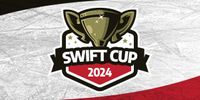A new initiative and contest by the Swift Current Creek Watershed Stewards is hoping to expand their footprint for phosphorous and nitrogen testing in the local waterway.
The testing is part of a larger joint campaign with three other watershed authorities; The Carrot River Valley Watershed and both the North and South Saskatchewan River Basin councils. The goal has been to collect water from various points in the various tributaries of the main Saskatchewan waterways to study how they contribute phosphorous to not only Saskatchewan waterways but to eventually the Lake Winnipeg Basin where they empty.
Kevin Steinley is the Executive Director with the Swift Current Creek Watershed Stewards. He says that the phosphorous and nitrates can come from a number of sources.
"It's naturally occurring in some places, so runoff can bring it to waterbodies. We're also probably seeing some increases from fertilizer contained in runoff. Also sewage; leaking sewer tanks as well as possibly from livestock facilities."
The issue is that increasing levels of those nutrients can promote algae growth in the water, which can in turn choke out the oxygen for other wildlife in those ecosystems.
Each of the four watersheds is currently testing in five different spots a few times each year, and at the same time are testing an app built by Global Water Futures to compare its accuracy to their own testing results. By doing so, they hope that they can organize community engagement to increase their testing locations exponentially.
As the app is a free download on both ios and android and makes use of readily available water testing strips, they're encouraging residents to test their own local waterways near them and, using GPS record the results to a database that shares provincial results.
Regarding the accuracy of an app that makes use of a smartphone camera, Steinley says that that is one of the things that they are hoping to test with this project.
"That's one of the things that we are looking at in this project; taking our lab results and comparing them to the results gained on the app using the test strips. So we're hoping with four groups testing nine times throughout the year at five different spots we'll have a lot of tests (to) determine the accuracy (of the app)."
It's a way to increase their testing footprint while also engaging the public's interest in learning about water security.
To facilitate that interest, Steinley also talked about a contest that is running that would see $250 dollars to the person who could come up with the most creative way of collecting a water sample.
It was born out of the Water Stewards' own team looking for ways to get at the water without getting wet.
"A couple of falls ago, we were looking for a way to collect water samples from different areas without having to necessarily climb into the water. What we came up with was to attach the bottle to a hockey stick, which worked out well for us."
The distinctly Canadian solution got them thinking that other people might have better, more creative solutions, and it would be a good opportunity for community outreach.
From there, the Nutrient Watch Facebook page was born; where not only could people post their DIY water collection rigs, but could also enter to win another $150 dollar prize by taking a photo of themselves using the smartphone app to test a water sample.
The deadline for entry is November 1, 2020. And more information can be found on the group's Facebook page, here.















